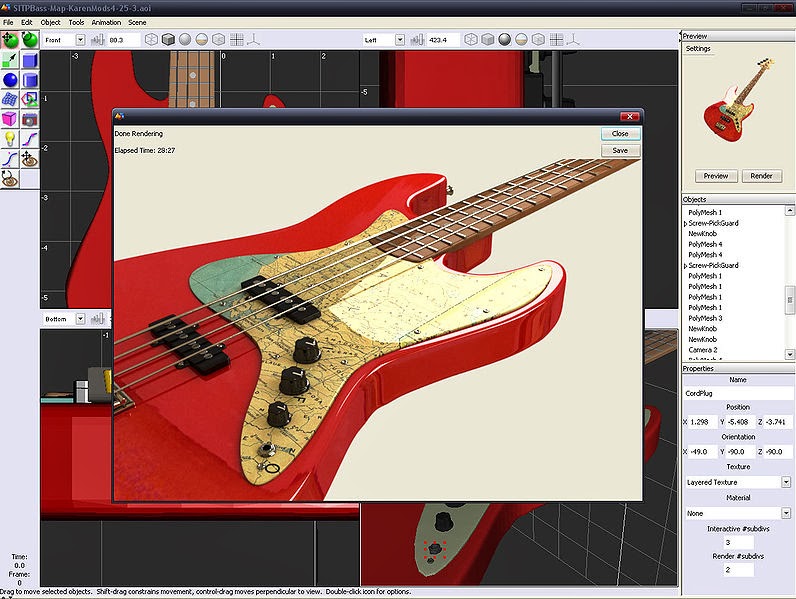

Since you can only draw two dimensions at once, you'll have to set a third dimension afterwards. Notice that you can draw any object in either the front, left or top view. From this panel you can change the box's size, position, orientation, and other properties (see figure below). It should be positioned with its origin at coordinate (0, -1.05, 0). The box should be sized 1.5 units on the X axis, 0.1 units on the Y axis, and 1.5 again on the Z axis.

On the right is a (now empty) space for showing a list of objects (shapes) in your model. Only the lower right view, Camera1, will be changed often because it's very useful for checking out the model. The standard views are quite sufficient for most modelling sessions. You will often change the scale and position of these views but not the viewpoint. These viewpoints can be changed using the two appropriate tools for movement and rotation. The bulk of the screen displays four views on the 3D model: Front, Left, Top and Camera1.įor each view the user can set a camera or standard viewpoint (front, left, top, etc.), perspective or parallel viewing mode, display mode (wireframe, shaded, etc.), and a zoom factor (default 100). Clicking them selects a tool and a single line of help is displayed at the bottom of the screen. If there's a lot up there that you don't understand, don't worry. On top of the window is your basic menu bar take a look around, see what's in the pulldowns. When you start AoI, you are presented the main screen.

If not, refer to the Art of Illusion home page. Lets assume that you've downloaded the whole bunch of AoI, you've got the right JDK version, read the readme files, and got the thing going. However, if you want to learn from this tutorial, you should try building the scene yourself. For you newbies: I'll get you going making your own 3D graphics in just a few minutes.įor the sake of completeness, an AoI scene file called "hourglass.aoi" is distributed with this tutorial that you can simply open with the modeller. You might leaf through it to get some idea of the program's capabilities, but please go and just try it out yourself. If you are already familiar with 3D modelling, you will propably not need to follow this tuturial step by step. You will propably figure out the rest by simply trying, experimenting, creating cool graphics. This tutorial does not cover all the feature found in the AoI modeller, there are simply too many, but enough to get you started.
#Art of illusion 3ds max how to
In this tutorarial you'll be shown how to model a simple object with Art of Illusion (AoI), using as an example the hourglass in the picture above. Art of Illusion modelling tutorial - the hourglass Art of Illusion modelling tutorialĬhanges copyright 2011 Peter Eastman Introduction


 0 kommentar(er)
0 kommentar(er)
